Homemade Pita Bread
Updated Apr 28, 2025
Learn how to make the best pita bread from scratch and enjoy homemade pita anytime you'd like! It's soft and only requires 6 ingredients!
This post may contain affiliate links. Please read our disclosure policy.
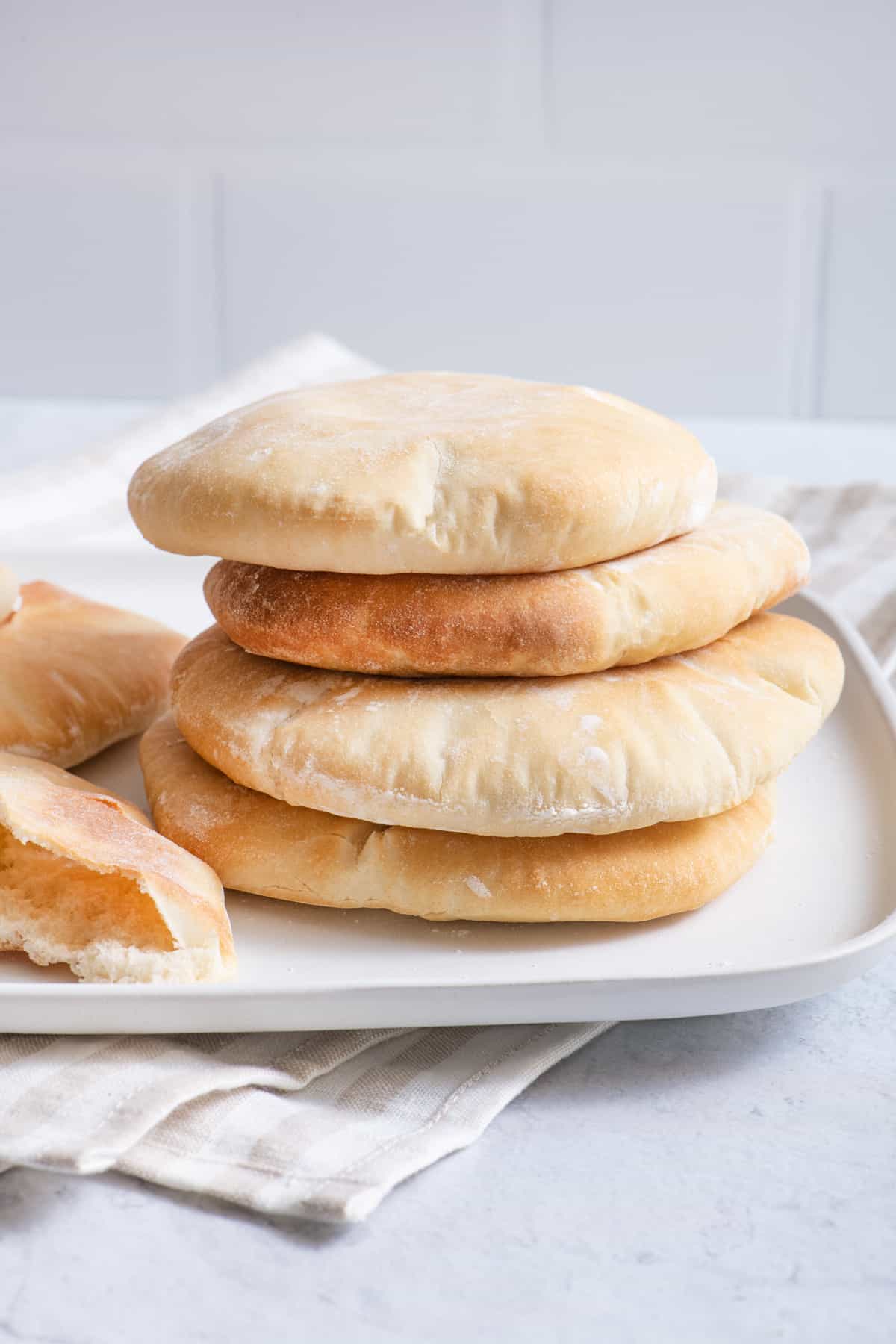
Jump to Section
Make My Homemade Pita Bread!

I grew up eating pita bread and it’s a must in any Middle Eastern home for scooping up hummus, making sandwiches with labneh and za’atar and toasting to make pita chips. I’ve even used pita bread as the base for making pita pizzas.
Growing up in Dearborn, Michigan, we had the luxury of enjoying the most delicious authentic pita bread sold in dozens of bakeries and grocery stores for $1 a bag. Now living away from Dearborn, I buy it in bulk and freeze it. But there’s nothing like fresh pita bread.
When I set out to research the recipe, I learned that the super-thin authentic Lebanese pita bread can only be made with special machinery. Homemade pita bread has a thicker consistency. I based my recipe on the pita from Amanda’s Plate and tweaked it to add olive oil and elaborate on the steps, so you get the perfect pita in your oven easily! If you’ve always wanted to make homemade pita bread, but were intimidated by the process, then this recipe is for you!
Happy Baking!
– Yumna
Homemade Pita Bread Ingredients
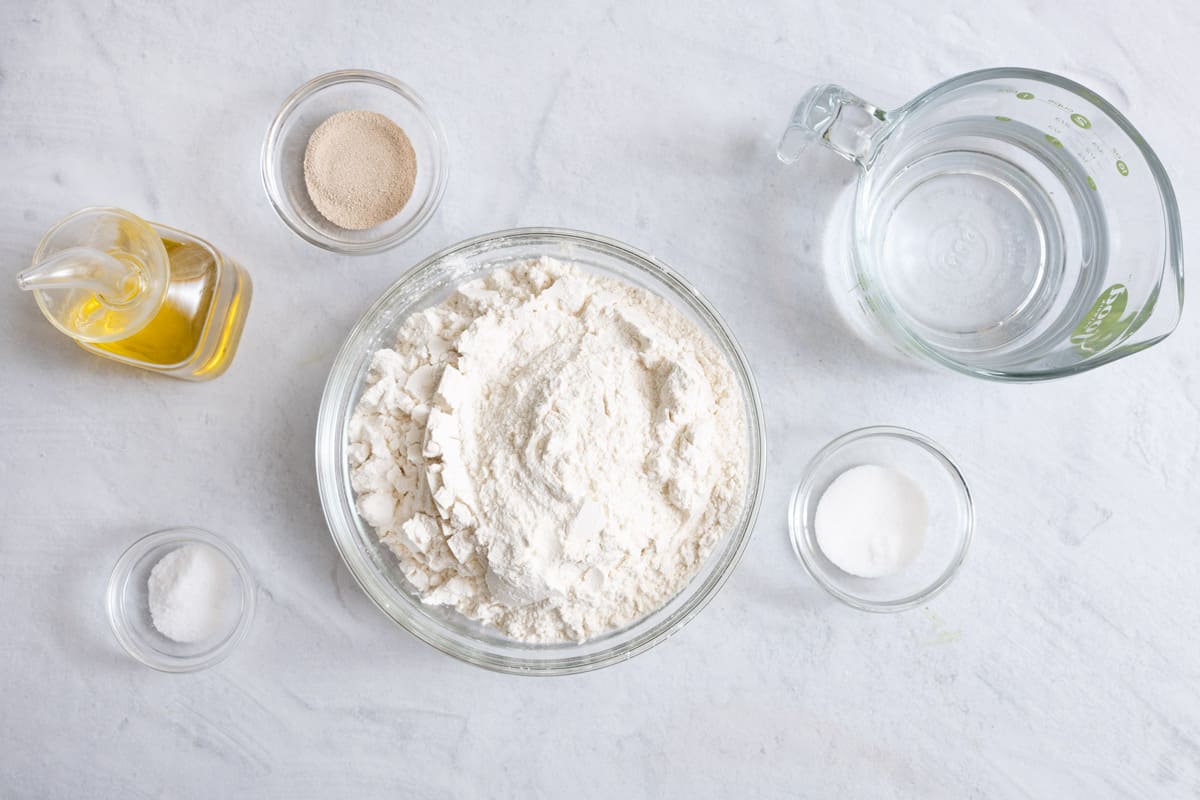
- Flour: Use all-purpose flour to keep things easy and accessible. You could also using bread flour or mix in some whole wheat flour.
- Yeast: Instant yeast works well. You need yeast for this recipe because it’s what creates the pocket in the pita.
- Sugar: Sugar helps to activate the yeast. Use granulated sugar or honey.
- Salt: Salt brings out the flavors of all the other ingredients. You can also add ½ teaspoon of dried herbs like rosemary, oregano or thyme when you add the salt.
- Olive oil: This adds flavor and helps keep the dough from drying out.
- Water: Make sure your water is not too hot or too cold. Instant yeast does need slightly warmer water (around 120°F to 130°F) to get started. If your water is too hot, it will kill the yeast, and colder water won’t activate it.
RECIPE VIDEO TUTORIAL
How to Make Homemade Pita Bread
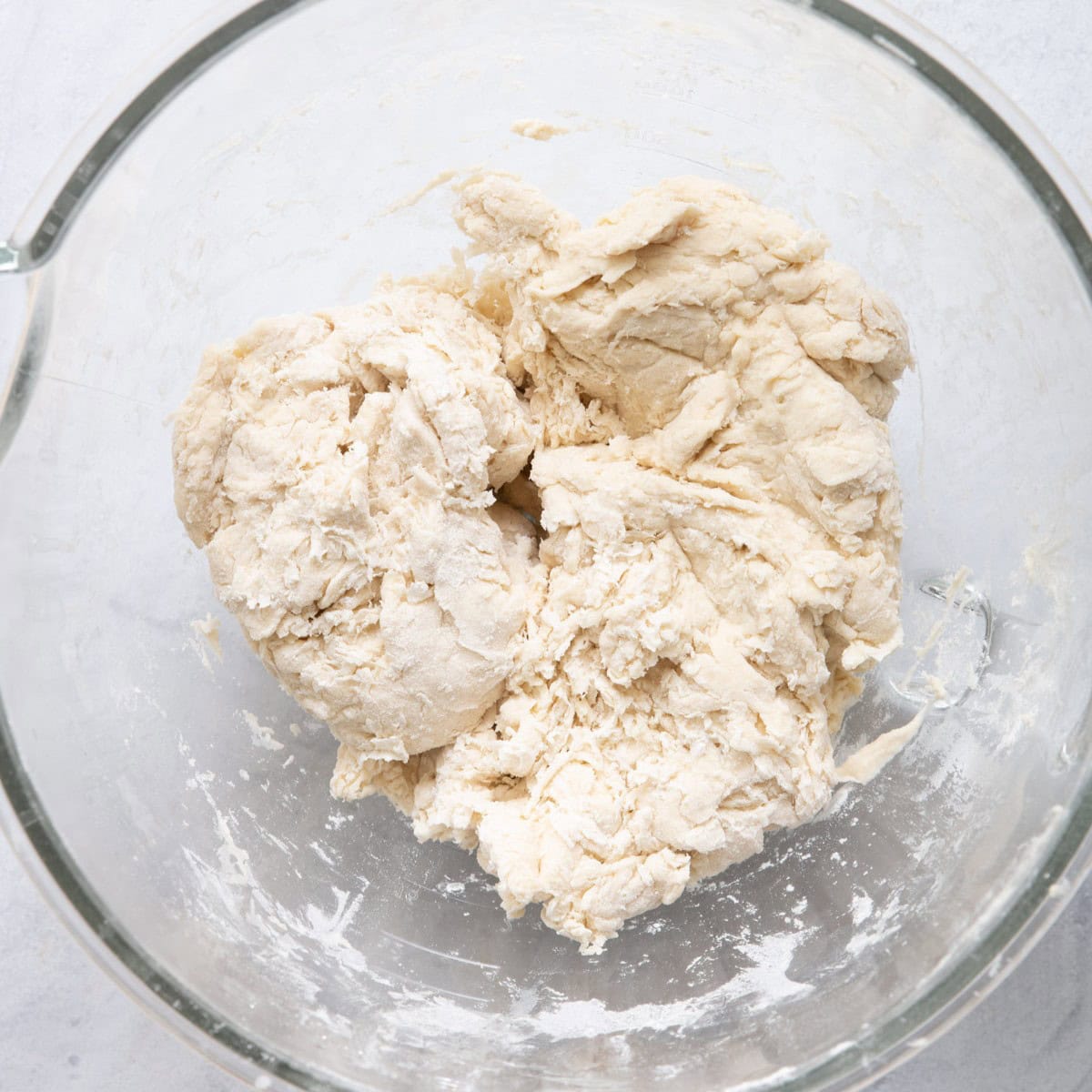

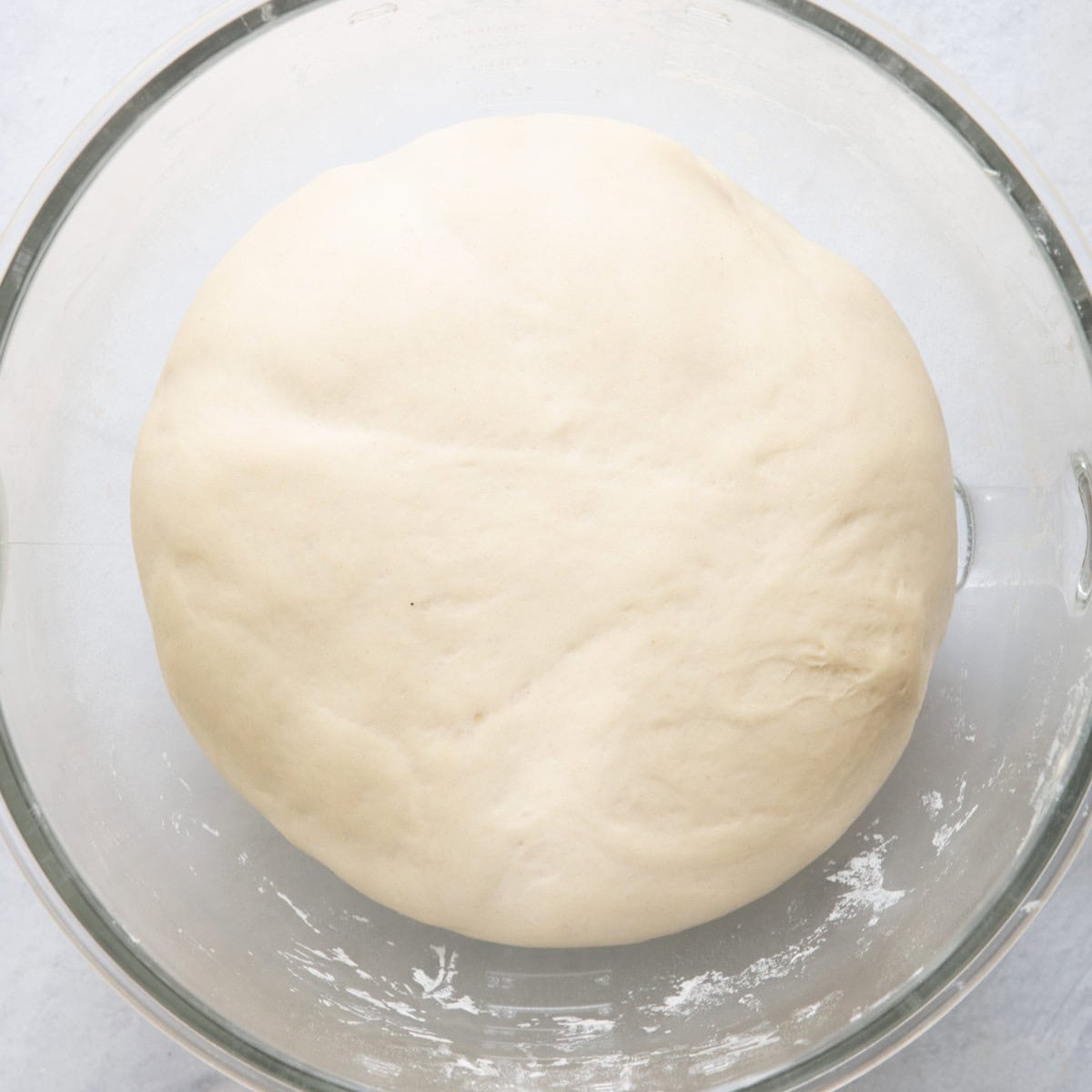
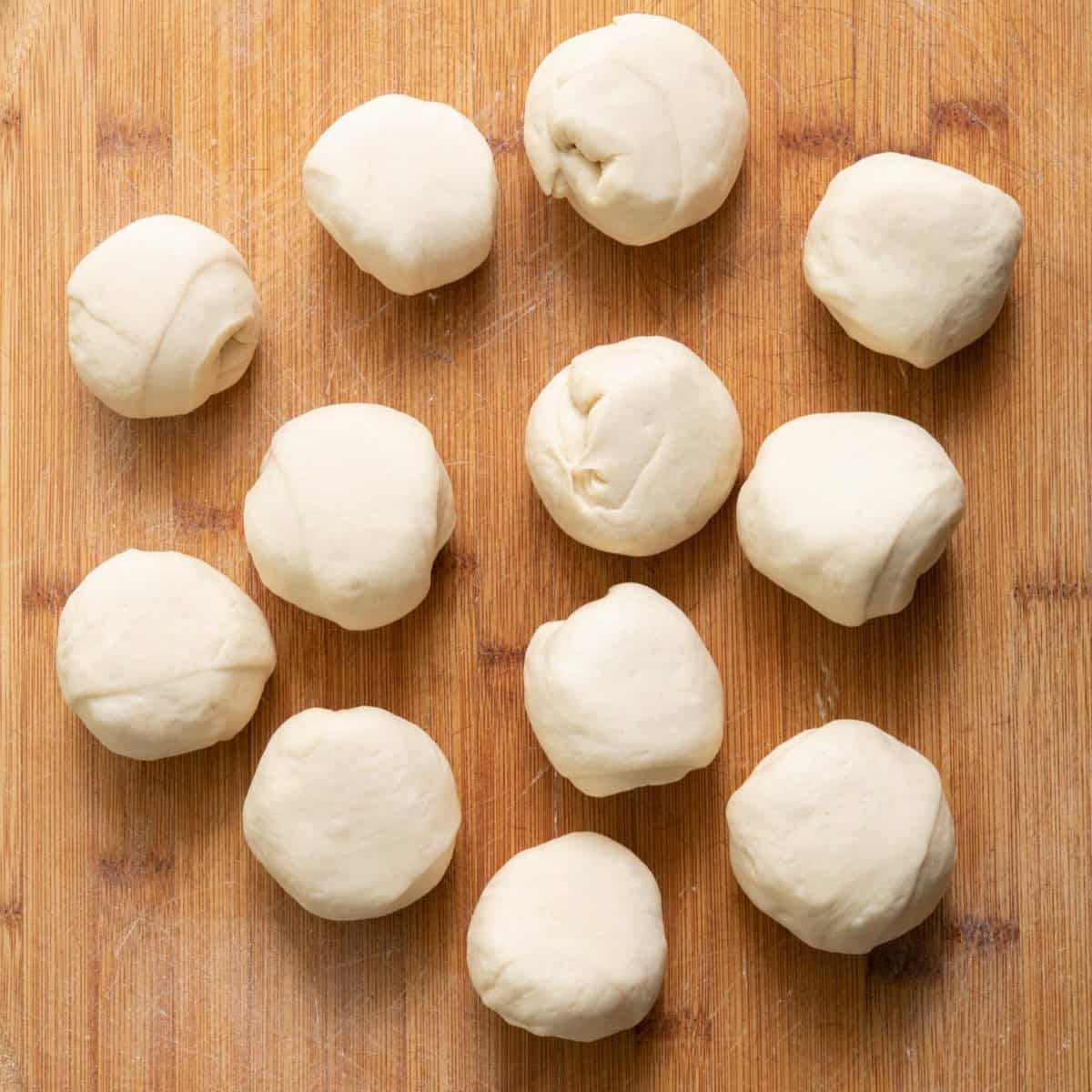
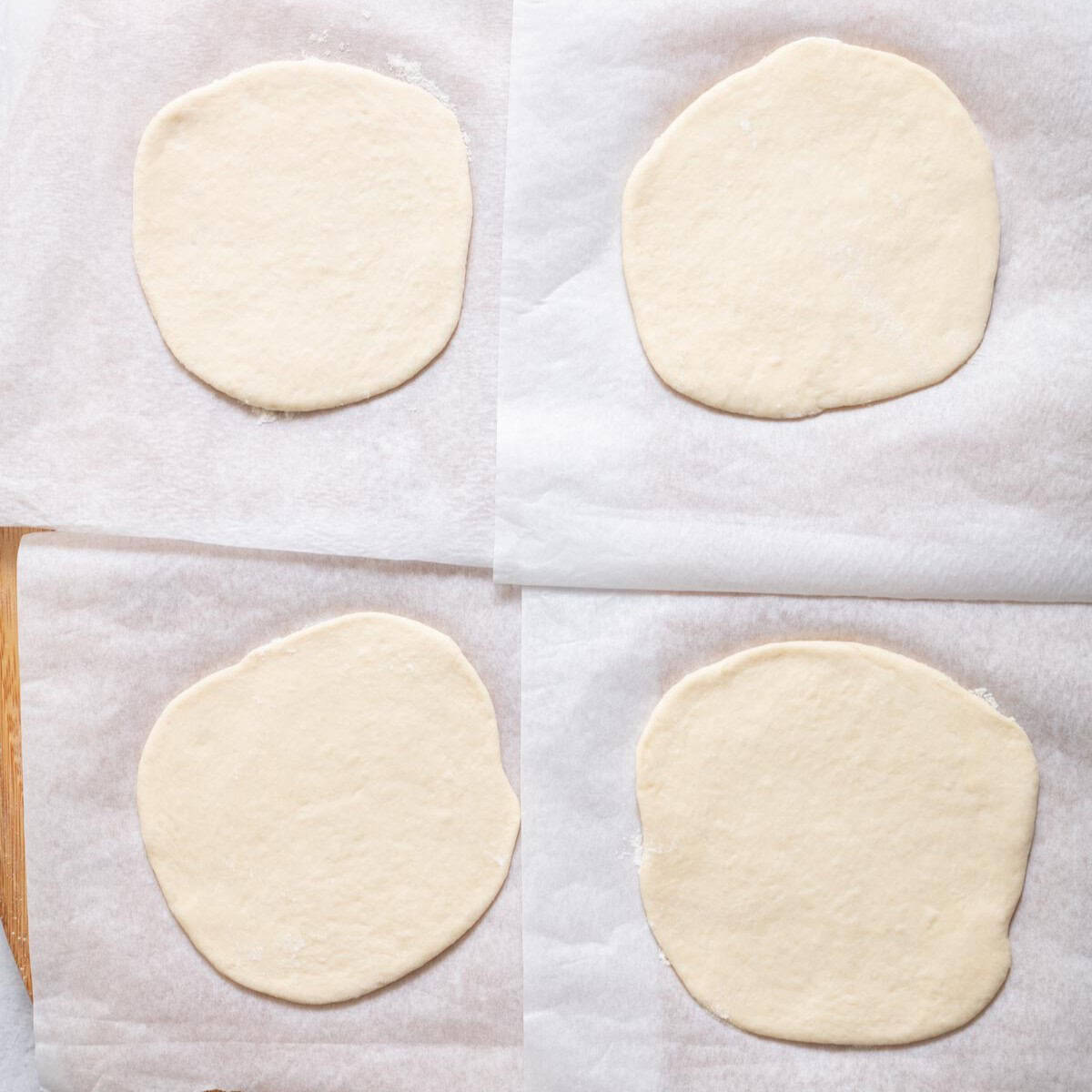
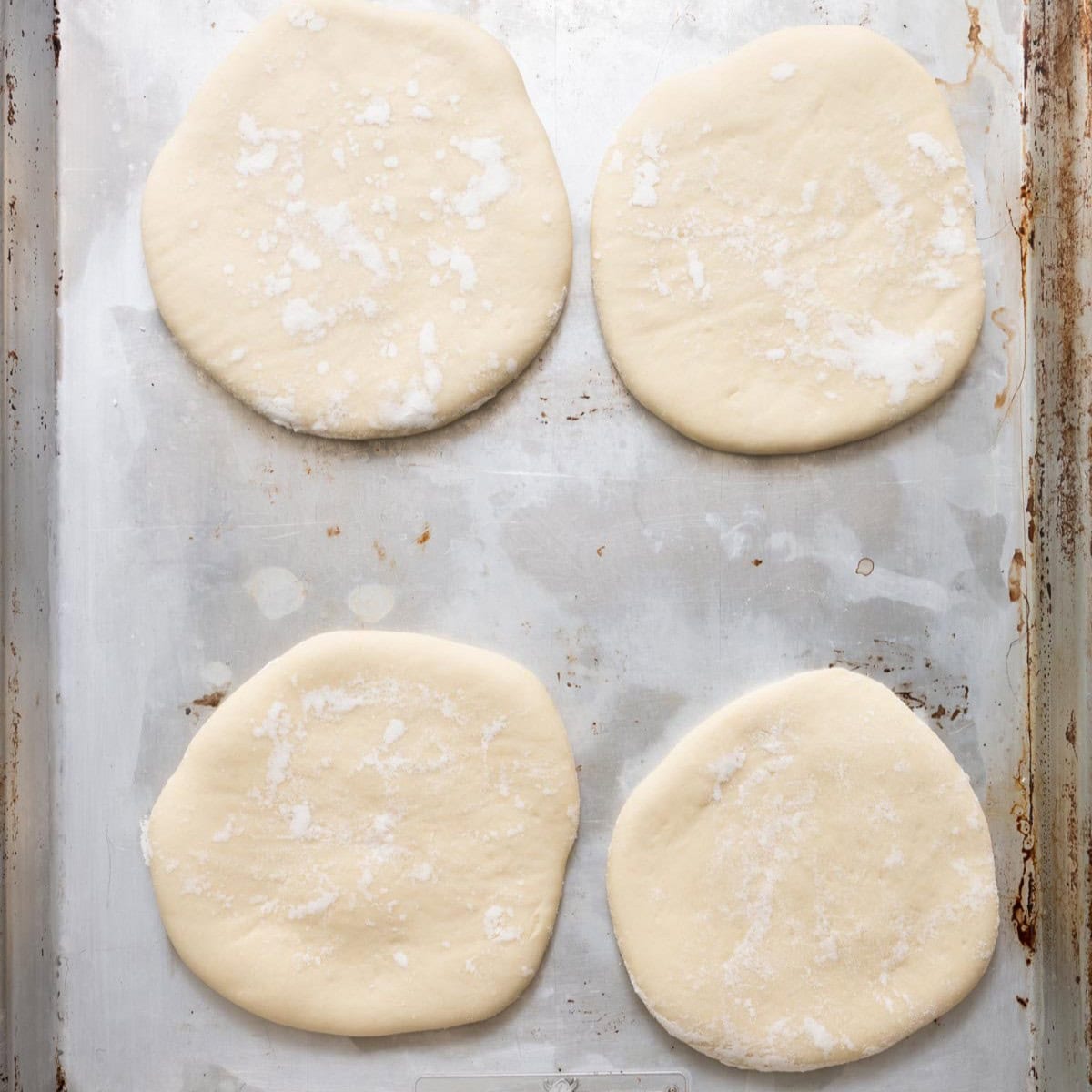
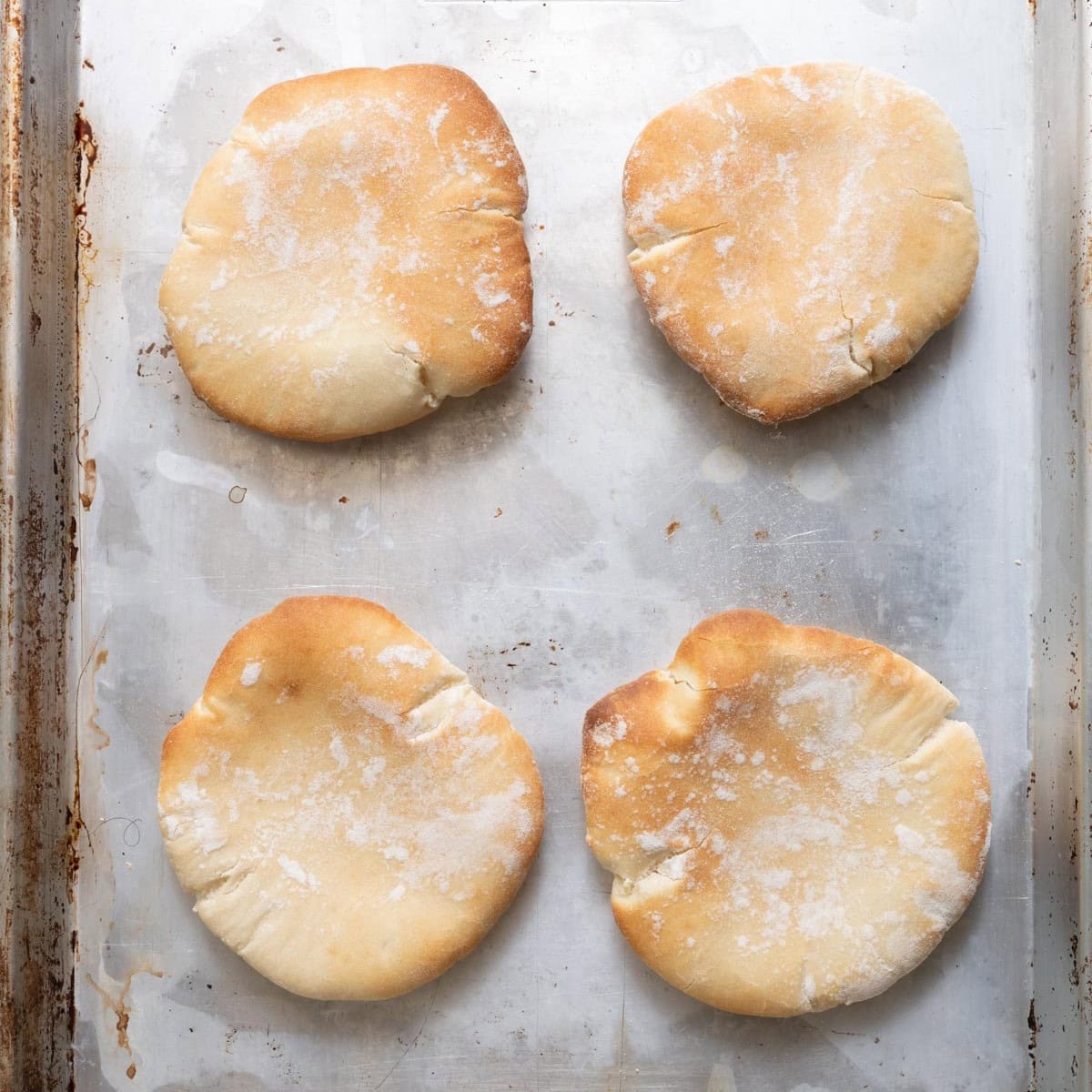
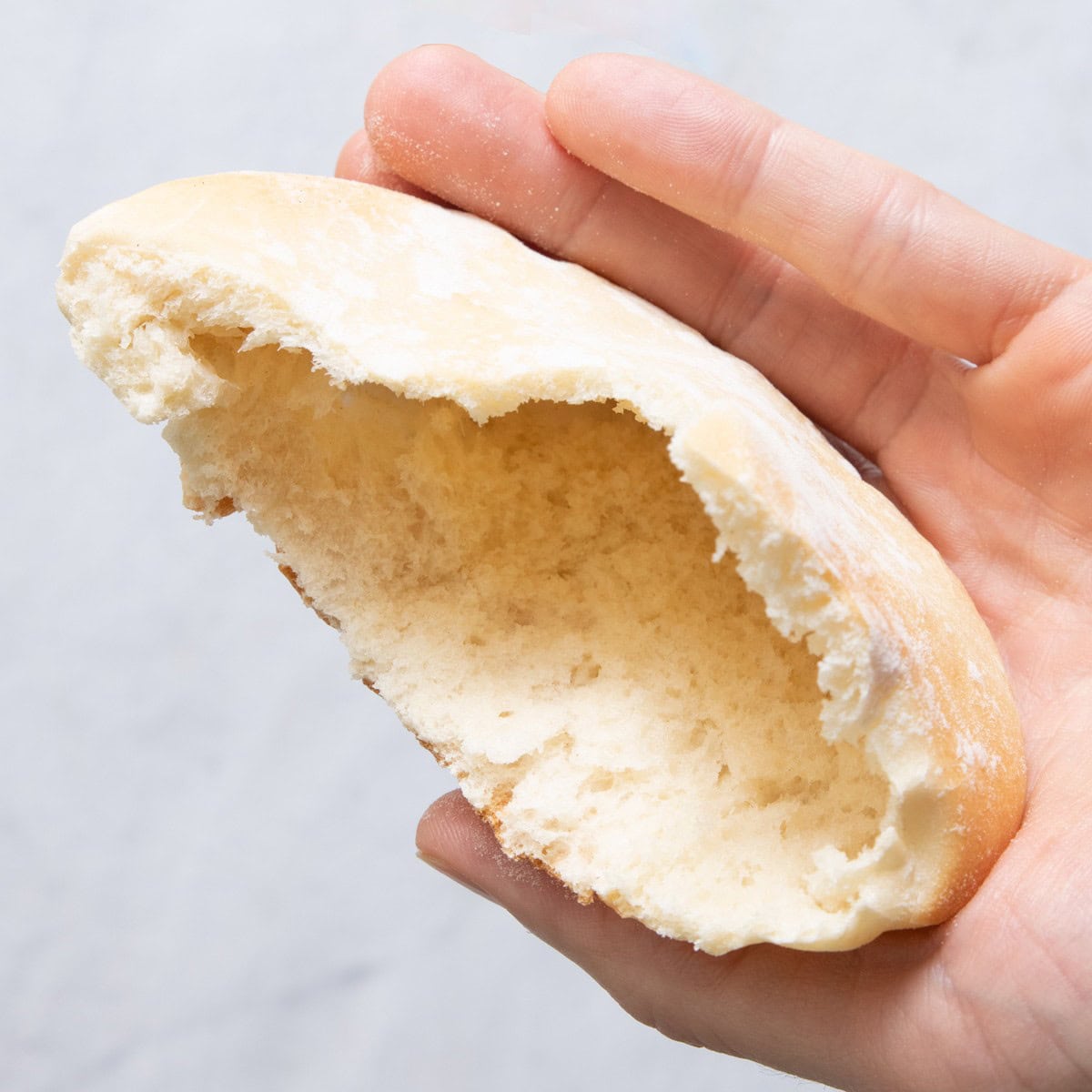
Recipe Tips
- Knead the dough by hand. If you don’t have a stand mixer, you can use a flat wooden spoon to mix the ingredients. Then turn the dough onto a well-floured surface and knead until smooth. It will take about 10 minutes to do it by hand.
- Adjust the flour amount in the dough recipe based on humidity. It should feel slightly sticky but without sticking to your fingers.
- Roll out as evenly as possible. This is very important because it helps to disperse air bubbles and evens out the dough to make sure that the pita separates in the oven equally without one part being too thick or not separating.
- Pay attention to the seam when placing the dough in the oven. This is not necessary, but a helpful tip to result in the best looking homemade pita. Make sure the seam (or the part of the dough ball with the folds) is facing down, which will allow the top seamless part to rise perfectly.
- Keep the pita size small. It’s tempting to try to make larger pita bread, but without special pita machinery to press the dough perfectly flat, it can be hard to get the dough to separate and form pita pockets if you make them too large. Aim for 4-6 inches in width.
Serving Ideas
As a Lebanese foodie with pita bread being a staple in my fridge, my answer to this is EVERYTHING! But here are a few favorites that are definitely great with homemade pita bread.
- Labneh
- Shish Tawook
- Hummus
- Roasted Cauliflower Pitas
- Arayes (Meat Stuffed Pitas)
- Fattoush (With Fried Pita Chips)
- Chicken Fatteh
- 7 Layer Mediterranean Dip
Recipe Help & FAQs
If you have leftover pita bread, you can store it in a zip-top bag or an airtight container at room temperature for 2-3 days. You can also store it in the fridge to prolong its shelf life, up to 5 days.
To reheat, place the pita bread on a baking sheet and bake at 350°F for about 1 minute, or it’s faster to reheat in the microwave for 10 seconds.
Yes, you can freeze pita bread! Just make sure to wrap it tightly in plastic wrap or place it in a zip-top bag and freeze for up to 3 months. When you’re ready to eat it, just thaw out at room temperature or in the fridge.
Pita bread and naan are both leavened with yeast, but naan is traditionally made with yogurt and an egg. Making naan denser results in a thicker, chewier texture than pita. Pita and naan both are generally soft in texture, but pita will have a pocket in the center that naan will not. As far as flatbread goes it is the umbrella term for all bread that is, well, flat.
If your pita bread is dense, it might be because you didn’t roll the dough out thin enough. Make sure to roll it out as evenly as possible. If you’re having issues with it puffing up, your oven may not be hot enough. A good oven thermometer can help you troubleshoot this.

More Homemade Bread Recipes:
If you try this Homemade Pita Bread recipe or any other recipe on Feel Good Foodie, then don’t forget to rate the recipe and leave a comment below! It helps others who are thinking of making the recipe. I would love to hear about your experience making it. And if you snapped some shots, share it on Instagram so we can repost on Stories!

Homemade Pita Bread
Ingredients
- 1¼ cup warm water
- 2 teaspoons granulated sugar
- 2 ¼ teaspoons instant yeast 1 packet
- 3 cups all purpose flour plus more for dusting
- 1 tablespoon olive oil
- 1 teaspoon salt
Instructions
- In a large bowl or stand mixer fitted with hook attachment, dissolve sugar in the warm water. Sprinkle in yeast and let stand until mixture is foamy, about 5 minutes.
- Add 1 cup flour, olive oil and salt and stir with a wooden spoon. Slowly add remaining flour until a shaggy dough is formed. Knead for 10 minutes in the stand mixer until the dough comes together and is smooth.
- Cover dough with a moist kitchen towel. Allow dough to rise in a warm, dark place, until the dough has doubled in size, about 1 hour.
- Punch dough down and separate dough into 12 round pieces by pinching off some of the dough. Use your hands to tuck the sides and roll into an even ball, covering the pieces with a moist kitchen towel as you work. Allow to rest for 10 minutes.
- Use a rolling pin to roll out the dough as evenly as possible. This is important to ensure that the pita puffs up. Transfer the rolled out pita onto small squares of parchment paper floured lightly.
- Preheat oven 550°F (or to the highest temperature it will go) with the baking sheet inside the oven. While the oven is heating, allow the pita rounds to rest for about 30 minutes.
- Flip the rolled out pita onto the heated baking sheet. Bake on the bottom rack of your oven until lightly golden brown and puffed, about 3-5 minutes. Wrap them in a clean kitchen towel as soon as they come out of the oven.
Equipment
Notes
Nutrition
Nutrition information provided is an estimate. It will vary based on cooking method and specific ingredients used.






Comments
Thank you. I can’t believe how good these turned out. All your recipes are easy to follow and amazing (smala). ♥️
Yay!! You’re welcome! So glad you liked them!!
The dough was so easy to make and came out perfect, followed your recipe exactly. Can you make the pitas on a dry flat pan, on the stove top, like naan? Or stick to the oven?
Thanks, Nisha!! You can, but they puff up much better when baked in the oven. If you do end up trying the stovetop method, I recommend using a cast iron skillet on medium-high heat. Depending on the state of your skillet, you may need to add just a little bit of oil to the pan before you start, too (but be sure to wipe off the excess). Hope that helps!
Thank you so much; it was perfection as is so maybe will just stick to the oven method 🙂
So I was looking for something similar to my grandmother’s recipe because I can’t find the card I got like 20 years ago. We spent a whole day in the kitchen when she taught me how. Your recipe is the most similar I can find. So thank you very much for having posted. She’s been gone for 14 years now and my aunt and uncles made a request. So again thank you very much!
Aww, I am so happy it reminds you of your grandmother’s recipe!! You’re so welcome, Natajia!
Just made this but subbed a few ingredients to make it clean and wow!!! Came out so so so good! For every cup of AP flour I did 113g whole wheat bread flour and swapped Monk Fruit in place of the sugar. Did everything else the same and it turned out fabulous! So happy to now have a go to pita recipe!!
Love the tweaks you made!! So glad you liked the recipe, Amanda. Thank you!!
Just requested your pita recipe, can’t wait to try it—thank you! Noticed that the amount of yeast packets is incorrect for double and triple batches- it says 6.75ts of yeast is one packet…just for your editing purposes.
I hope you enjoy the recipe, Jay! Thanks so much for pointing this out. Unfortunately, this is a flaw in the recipe card coding—when you click on the ‘2X’ and ‘3X’ buttons it adjusts the measurement but not the note (in this case, ‘1 packet’).
The dough was absolutely disastrous. So wet! But I needed the pita for dinner so I added tons of flour. So hard to handle the dough, make the balls and roll out. Not pleasant! The pita were still not golden after 5 minutes but I didn’t want them to hard. So shocked that all actually puffed and were able to be stuffed! But not a recipe I will make again.
Oh no, I’m sorry to hear that. Is it humid where you live? Humidity can affect how wet your dough is. Adding more flour was the right call!
This is actually a foolproof recipe, don’t be intimidated when it’s messy at the start. The dough is wet and shaggy at the beginning and you might be tempted to keep adding flour but that’s what made your dough hard at the end. When you first start kneading the wet dough, dust your hands with flour, but don’t be tempted to add too much. After a few minutes of kneading you’ll notice the dough getting smoother and more together when the gluten starts developing. It is definitely easier and less messy to do it with a stand mixer with the dough attachment. But it is also possible to do it by hand, which is what I do. By the end of kneading it for the full 10 minutes (it is a workout but it adds love and is relaxing) it should be perfectly smooth and ready to rest and rise. This gluten development stage of kneading is crucial in making sure the end product is soft and easy to handle.
Your recipes are so amazing! First time making pita and they are perfect!
Aww, thank you! I’m so happy your pita turned out great, Clara!!
Came out perfect!! Didn’t have instant yeast so used regular active dry yeast this is my first time making this or anything like it. Got oven to 550 made them in the oven in sets of 3 just to see. First set I let sit for 5 mins came out to firm. Then did 3 mins and it was perfect!
Amazing! I’m so happy you liked it, Monique!
Is it possible to make the dough and freeze it, and then pull them out and bake off just a few at a time? Or would you just recommend freezing the freshly cooked pita?
I would recommend freezing the cooked pita, that’s what works best for me. I don’t see why you couldn’t freeze the dough and bake just a few at a time though, just make sure to wrap your balls of dough really well.
Wow! I was worried that being at a high altitude would affect the recipe and the rising of the pita, although they came out wonderfully puffy! Huge pocket in the middle too! I am so glad I found YOUR recipe while in the grocery store as I was looking at prepackaged pitas (with ingredients I didn’t want to ingest!) THANK YOU! If I could post a photo I would love you show everyone how great they came out the first time!
Yay!! I’m so happy to hear they turned out great even at a high altitude! Thanks so much, Jacqueline!!
I’m bummed because though your recipe was straightforward and real easy to follow, my pitas did not puff up at all! I happen to be Lebanese and was hoping I’ll get better results. I did follow your instructions to the T- yeast was new and did foam up! I don’t get it! 🤦🏻♀️
hi there, so sorry to hear! What size were the pita in diameter? Without special pita machinery to press the dough perfectly flat, it can be hard to get the dough to separate and form pita pockets if you make them too large. Aim for 4-6 inches in width.
See All Comments